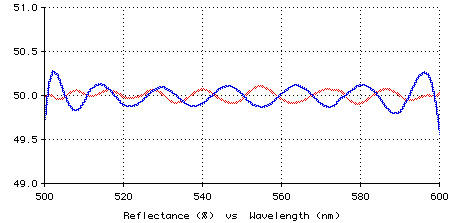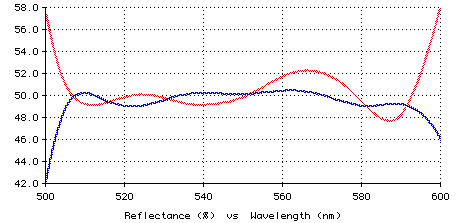Focus on: Biconical Transmittance



In TFCalc 3.5, the reflectance and/or transmittance of a cone of light can be optimized. See the information about cone-angle targets.
|
Focus on: Biconical Transmittance |
|
When a coating is used in a convergent beam (as illustrated in the graphic
shown above), TFCalc can compute the biconical transmittance (also called
the cone-angle average in TFCalc). This computation is especially
important if the performance of the coating varies dramatically with the
incident angle, such as a bandpass filter or a beamsplitter. Note: because
spectrophotometers (which use convergent beams) are used to measure the
performance of coatings, this computation may be important even for coatings
that are used at only one incident angle. That is, the spectrophotometer measurement
may indicate that the coating is defective when it is actually correct.
For example, consider a wideband, dielectric, immersed 45-degree beamsplitter,
whose reflectance is shown below.
In TFCalc 3.5, the reflectance and/or transmittance of a cone of light can be optimized. See the information about cone-angle targets. |
|
Copyright © 1995-2008 Software Spectra, Inc. |